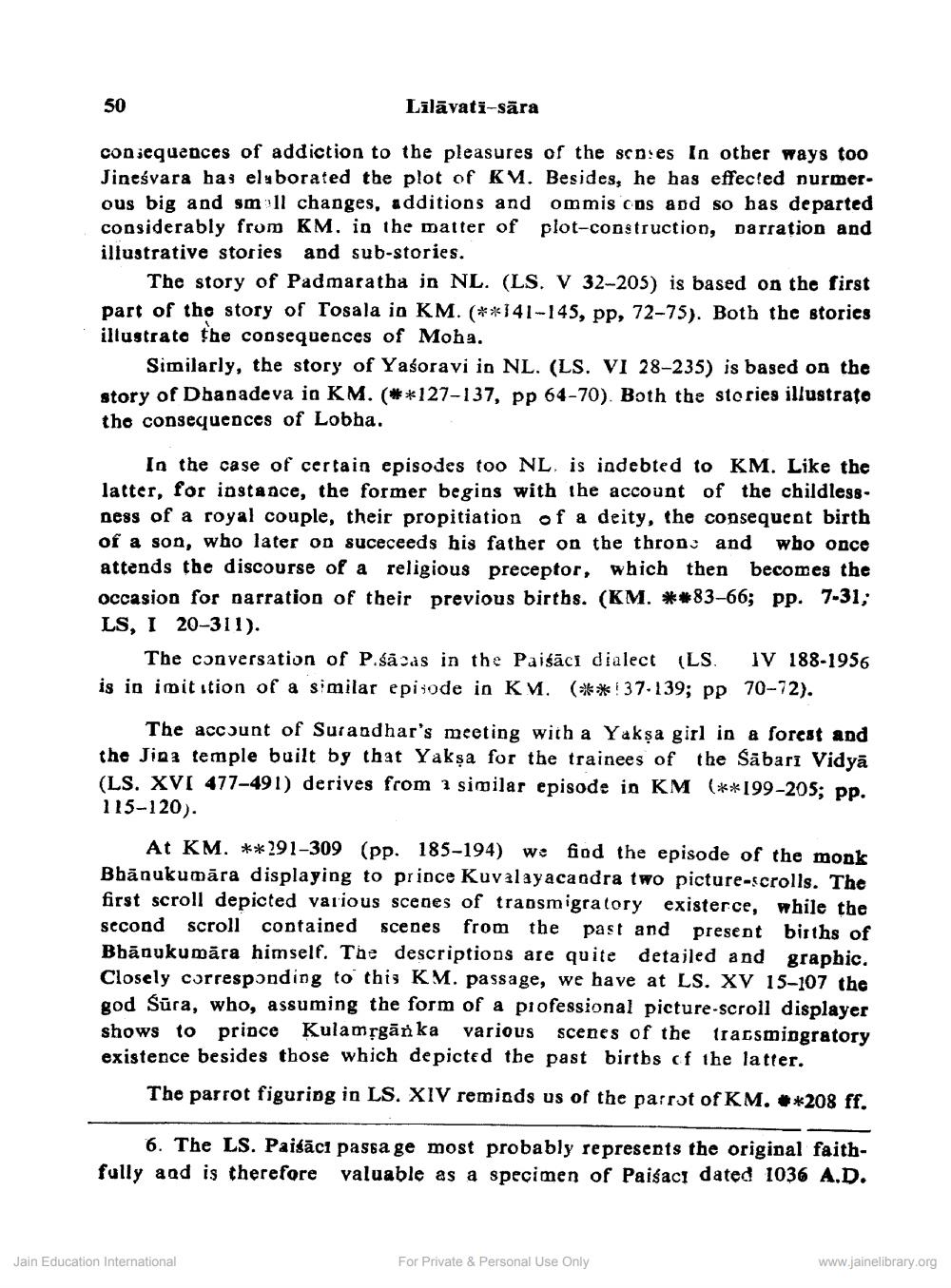________________
Lilavati-sära
consequences of addiction to the pleasures of the senses In other ways too Jinesvara has elaborated the plot of KM. Besides, he has effected nurmerous big and small changes, additions and ommis ons and so has departed considerably from KM. in the matter of plot-construction, narration and illustrative stories and sub-stories.
50
The story of Padmaratha in NL. (LS. V 32-205) is based on the first part of the story of Tosala in KM. (**141-145, pp, 72-75). Both the stories illustrate the consequences of Moha.
Similarly, the story of Yasoravi in NL. (LS. VI 28-235) is based on the story of Dhanadeva in KM. (*127-137, pp 64-70). Both the stories illustrate the consequences of Lobha.
In the case of certain episodes too NL is indebted to KM. Like the latter, for instance, the former begins with the account of the childlessness of a royal couple, their propitiation of a deity, the consequent birth of a son, who later on suceceeds his father on the throne and who once attends the discourse of a religious preceptor, which then becomes the occasion for narration of their previous births. (KM. **83-66; pp. 7-31; LS, I 20-311).
The conversation of P.44cas in the Paisact dialect (LS. IV 188-1956 is in imitation of a similar episode in KM. (#37-139; pp 70-72).
The account of Surandhar's meeting with a Yaksa girl in a forest and the Jina temple built by that Yaksa for the trainees of the Sabari Vidya (LS. XVI 477-491) derives from a similar episode in KM (199-205; pp. 115-120).
At KM. **291-309 (pp. 185-194) we find the episode of the monk Bhānukumāra displaying to prince Kuvalayacandra two picture-scrolls. The first scroll depicted various scenes of transmigratory existerce, while the second scroll contained scenes from the past and present births of Bhanukumāra himself. The descriptions are quite detailed and graphic. Closely corresponding to this KM. passage, we have at LS. XV 15-107 the god Süra, who, assuming the form of a professional picture-scroll displayer shows to prince Kulamṛgānka various scenes of the tracsmingratory existence besides those which depicted the past births of the latter.
The parrot figuring in LS. XIV reminds us of the parrot of KM. 208 ff.
6. The LS. Paisact passage most probably represents the original faithfully and is therefore valuable as a specimen of Paiśact dated 1036 A.D.
Jain Education International
For Private & Personal Use Only
www.jainelibrary.org




